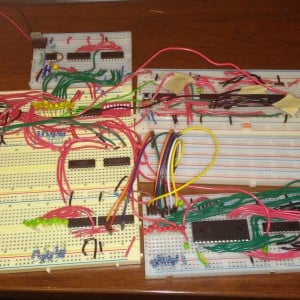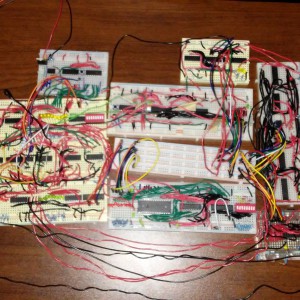DrenDran submitted a new Showcase Item:
CPU out of logic gates
Read more about this showcase item here...
CPU out of logic gates
Inspired by a few YouTube videos showing projects of the same nature, I decided to create my own breadboard computer. Basically, it stores the program to be run as well as that data it's using on a RAM chip. Using somewhere between 8 and 16 instructions I'll be able to make it do basic things like add numbers, subtract numbers, store data in ram, add data to ram, compare values, jump to other parts of the code, etc.
It's far from done, but I've gotten the program counter, command registers, clock, and memory unit wired so far.
Attached is a photo but I've also created a YouTube video:
View attachment 33186
Read more about this showcase item here...



